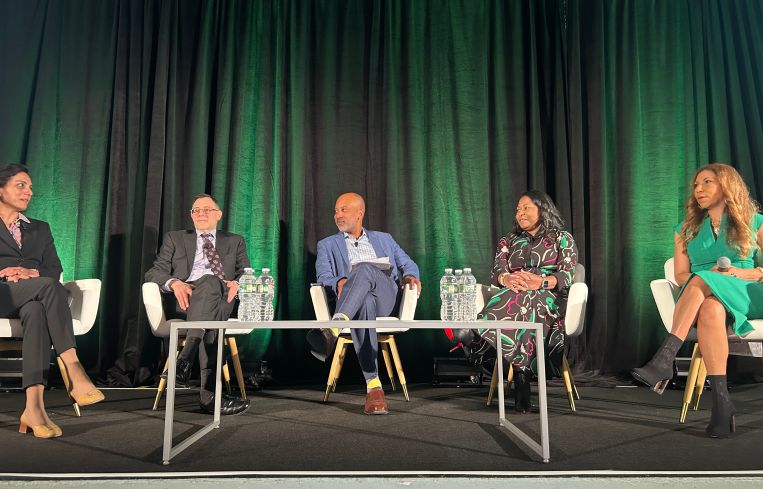CRE Borrower Budgets Are Under a Lending Microscope in 2024: ULI Panelists
By Andrew Coen April 9, 2024 4:28 pm
reprints
As commercial real estate sponsors grapple with “higher for longer” interest rates, their operating expenses are facing far more scrutiny when it comes to underwriting loans, according to lenders at the Urban Land Institute (ULI) spring meeting.
Insurance costs, real estate taxes and capital expenses have been the biggest budget line items negatively affecting CRE borrowers since the Federal Reserve began hiking interest rates from near-zero borrowing levels two years ago, according to Michael Amoia, head of asset strategy for MetLife Investment Management.
“When we look at a budget now, we question what is in the budget that is accretive income, and what’s a necessary expense for a deferred maintenance. You don’t get credit for deferred maintenance on rent rolls,” Amoia said during the ULI session “Capital Markets: Securing Debt Today” during the first day of the three-day conference at the New York Hilton Midtown. “You look at budgets now and ask: If there is a future funding obligation, do we want to lend against that entire funding obligation?”
Tiara Henderson, diverse segments leader for Wells Fargo’s corporate and investment banking’s real estate business, said insurance costs in particular have become a major headwind, and deals not penciling have become a primary factor in loans not closing.
Henderson stressed that Wells Fargo has traditionally been “more conservative in general” when it comes to pursuing lending opportunities. Today the bank has average loan-to-cost (LTC) ratios between 55 percent and 65 percent for balance sheet transactions, with commercial mortgage-backed securities (CMBS) deals sometimes going up to 80 percent LTC, depending on conditions in the public markets.
The capital markets session also featured Sadhvi Subramanian, U.S. Bank’s market manager for the CRE east region, and Tammy Jones, CEO and founder of Basis Investment Group. The moderator was Kyle Bolden, senior audit partner in the real estate, hospitality and construction practice of Ernst & Young.
“COVID stopped a lot of the deferred maintenance not only on the multifamily side but other property types, and now that’s all surfacing,” Subramanian said. “Everybody is being a little bit more cautious about how they are underwriting [deals].”
Subramanian said lenders are requiring more reserves from property owners to account for an estimated 7 to 10 percent increase in operating expenses due to higher inflation in recent years, coupled with higher labor costs. She also noted that rising insurance expenses have become a big “wild card” for many property owners, leading to more discussions between lenders and borrowers when trying to iron out potential loans.
Jones said Basis was busy in 2023 as a private lender trying to fill a financing void faced by many CRE owners now. That void occurred as banks often stepped back with preferred equity deals paired with senior loans and also bought some CMBS B pieces, she said.
“When you think about private credit, we’re called alternative credit providers for a reason, so last year was a year for some of us to step into the gap,” Jones said. “The bank share is so large that even if alternative providers stepped in we couldn’t take care of all the needs, but we were able to take advantage of a lot of opportunities with situational distress.”
Andrew Coen can be reached at acoen@commercialobserver.com


